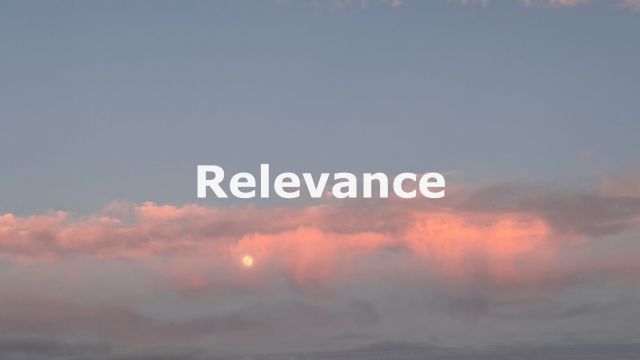
SL008 Personal Planning Day – Get More Clarity
Have you ever felt like you’re constantly reacting to life rather than controlling it? Do you ever wonder how you can break free from just “getting through the day” and regain focus? What if there was a way to pause, reflect, and steer your life in the direction you truly want?
A Hands-on Structure For Planning
In this episode, I want to focus on something practical: Personal Planning Days. We live in a world driven by AI, robotics, and rapid technological change. Many of us feel like we’re just reacting to these changes, constantly playing catch-up. This feeling of being “managed” rather than in control is exhausting. But there is a way out of this trap—by taking a step back and dedicating time to personal reflection and planning.
Visit my website (you’ll find the link in the show notes: https://bensmann-consulting.com) or go directly to the information page about the Planning Day:
Today, I’m going to introduce a structured method that I’ve refined over the years: The Personal Planning Day. It’s a one-day strategy to reflect, regroup, and reset your goals, helping you to steer your life with purpose. So, if you’re ready to take back control and feel more empowered in your personal and professional life, keep listening.
Why do you need a Personal Planning Day?
We all need time to stop reacting to the world around us and start proactively setting our course. A Personal Planning Day gives you:
1. A structured, time-efficient process – In one day, you’ll cover everything from reviewing the past year to setting actionable goals for the future.
2. Proven tools – These methods and tips are pragmatic, and you can integrate them into your leadership style immediately.
3. Long-lasting impact – When you make this day a regular event, you’ll have a framework for follow-up sessions each year, ensuring consistent progress.
4. Increased motivation – By the end of the day, you’ll have a clear plan, along with a renewed sense of confidence and optimism.
Ready to learn more? Let’s dive into the structure of the Personal Planning Day.
Preparation
Preparing for a Personal Planning Day requires thoughtful groundwork to ensure it’s productive and effective. You can’t go into this day unprepared if you want to see real results. Throughout the year, keep notes on important trends, ideas, or shifts in your thinking. These will provide the raw material for your planning day.
7 Stages of the Personal Planning Day
Here’s how to structure the day into 7 stages:
Stage 1: Reflection
Start by reflecting on your past achievements—this is the foundation for setting new goals. Central to this is your “List of Achievements.” Take time to celebrate your wins, no matter how small, and acknowledge areas where progress was made. Some people may find it helpful to review “non-achievements,” but this is more about learning from challenges. The key here is to examine your long-term vision: Has it evolved, or should it? By starting with reflection, you create a clearer picture of what’s next.
Stage 2: Pause for Thought
Taking a pause is not just about slowing down; it’s about taking a step back to evaluate your current path. Are you on a trajectory that still excites you? Or is there a voice inside nudging you toward change? This stage is critical because busy leaders often fail to question whether they are simply moving or truly progressing. Use personal notes, journals, or sketches to revisit ideas you may have overlooked. In this stage, don’t rush—insight requires stillness.
Stage 3: Trend Scouting
Leaders often get so focused on their immediate tasks that they overlook broader industry shifts. This is your chance to look outward—to explore the trends and innovations that will shape your future. I recommend using tools like AI or simply consulting experts to forecast the next significant shifts in your field. What emerging trends could impact your personal or professional life? How can you prepare now?
Stage 4: The Fourfold Map
This is where you break down your activities into four categories:
1. Continue doing
2. Do differently
3. Start doing
4. Stop doing
These align with the four quadrants: Continue, Modify, Innovate, Eliminate.he four quadrants—Continue, Modify, Innovate, Eliminate.
This model encourages not just incremental change, but bold rethinking. Look at your daily routines and ask: What’s working well, and what’s holding me back? This stage is about tough decisions and meaningful shifts to position yourself for long-term success.
Stage 5: Well-being Check
In this phase, it’s essential to identify what truly brings you happiness and satisfaction. What environments and activities fuel your creativity and joy? My six current conditions for well-being—creativity, using talents, personal time, contribution, ease, and positive relationships—may offer a guide, but what are your unique indicators of well-being? Defining these gives you a compass for the year ahead.
Stage 6: Updating your Goals
It’s one thing to dream, but quite another to plan. This stage is where your visions transform into actionable steps. Use a one-pager to keep all your goals visible throughout the year. Breaking your long-term goals into actionable chunks can be empowering, and keeping a printed version nearby allows you to revisit it regularly, keeping your focus aligned. Don’t forget to choose a motto for the year—something to anchor your mindset and actions.
Stage 7: Defining Next Steps
Finally, end with a concrete action plan. What are the first three steps you’ll take to make your plan a reality? This isn’t just about planning but about immediate execution. Set deadlines and commit to them, ensuring that this day of reflection turns into meaningful action in the days ahead.
Tips for a Successful Personal Planning Day
Now that you’ve completed the 7 stages, how do can you ensure that this process has a lasting impact?
It’s essential to revisit your notes and goals at least once a month. Set regular appointments in your calendar to ensure your progress. This prevents your planning from fading into the background as the year gets busier.
1. Schedule it like a top client meeting: Make it a priority in your calendar.
2. Book a space where you can focus: This could be a quiet hotel room or an inspiring location where you won’t be disturbed.
3. Bring materials to visualize your goals: Large sheets of paper, markers, and sticky notes work wonders for mapping out your ideas.
4. Document your results: Use your preferred digital tools (I like using Notes or Freeform) to capture key insights.
5. Commit to 3 immediate actions: By setting clear next steps, you ensure that the ideas from your Planning Day turn into real progress.
Get Help
I believe that many of you, dear listeners, are now fully capable of conducting your own Personal Planning Day using the structure I’ve outlined. But, if you would like more personalized guidance, feel free to reach out. I’m happy to help you through the process.
Want to learn more about my Personal Planning Day offering? Visit my website (link in the show notes: https://bensmann-consulting.com) or go directly to the information page about the Planning Day:
Music Into & Outro by Joakim Karud http://soundcloud.com/joakimkarud



